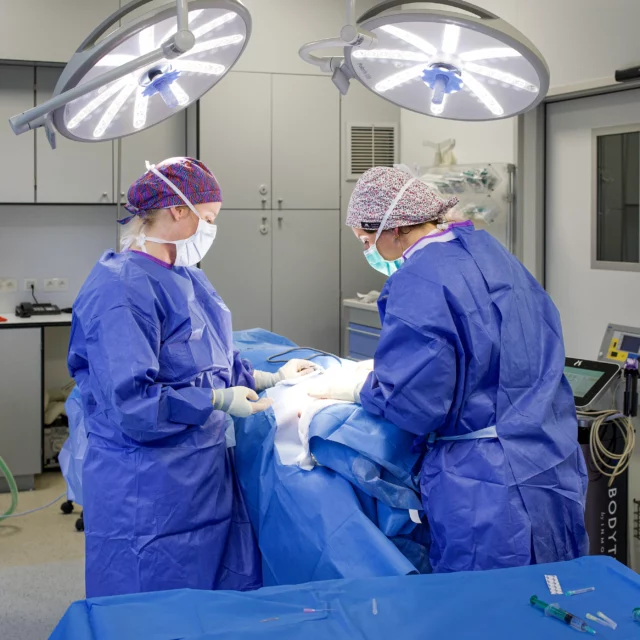What is breast asymmetry?
Breast asymmetry is more than just a difference in volume between the two breasts. It can also concern the shape, position or orientation of the nipples. Asymmetry can be genetic or hormonal in origin, or the result of events such as pregnancy, breast-feeding or major weight variations.
While slight asymmetry is perfectly natural for most women, in some cases it can be sufficiently pronounced to warrant surgical intervention to restore a harmonious silhouette.
Why correct breast asymmetry?
Breast asymmetry correction surgery aims to restore harmony between the two breasts, offering patients not only an aesthetic improvement, but also a boost in self-confidence.
- Improved self-confidence:
Body harmony plays a crucial role in self-esteem. For many women, correcting pronounced breast asymmetry can have a positive impact on their body image, enabling them to feel more comfortable and confident in a variety of situations, whether wearing a swimsuit or a fitted dress. - Harmonization of breast appearance:
Surgery offers the possibility of making breasts more symmetrical, whether by increasing the size of the smaller breast, reducing the size of the larger breast, or adjusting the position of the nipples. The result is harmonious breasts that blend in naturally with the patient’s figure. - Correction of noticeable differences between breasts:
Beyond the aesthetic aspect, pronounced breast asymmetry can also lead to physical discomfort, such as back pain or difficulty in finding suitable clothing. Surgery can correct these differences, offering patients greater physical comfort.
The benefits of surgical correction of breast asymmetry
- Restoring breast symmetry
- Improved overall aesthetics
- Precise adjustment to suit your needs
- Reduces any back pain
- Better clothing comfort
- Natural, harmonious results

Frequently asked questions
What are the common causes of breast asymmetry?
Genetic factors: Like eye color or nose shape, breast size and shape can be determined by genetics.
Hormonal changes: Puberty, menopause and menstrual cycles can influence breast size and shape.
Life events: Pregnancy, breastfeeding and weight changes can lead to changes in the breast, sometimes accentuating asymmetry.
What are the surgical options?
Smaller breast augmentation: Breast augmentation is a procedure designed to increase the size of the breast using breast implants. In the case of asymmetry, this technique can be used to increase the volume of the smaller breast to make it proportional to the other.
Larger breast reduction: Breast reduction is a procedure designed to reduce breast size by removing excess glandular tissue, fat and skin. For patients with asymmetry, where one breast is significantly larger than the other, this procedure can be used to achieve a balanced breast size.
Sagging breast lift: Over time, factors such as age, pregnancy and gravity can lead to sagging breasts. If the asymmetry is due to one breast sagging in relation to the other, a breast lift, or mastopexy, may be recommended. This procedure aims to lift and reshape the breast to give it a firmer, more youthful appearance.
What are the different types of breast implants available?
There are several types of breast implants (or prostheses) available for replacement, including silicone and saline. Silicone implants are popular for their natural feel, while saline implants are generally not used due to potential leakage and less natural appearance. Implants are also available in different sizes, shapes and profiles to meet the individual needs of each patient.
What are the common risks associated with surgery to correct breast asymmetry?
Risks inherent in any surgery include infection, bleeding and reactions to anesthesia. Complications specific to this procedure may include changes in nipple sensation, unsightly scars or residual asymmetry.
Can breast asymmetry occur after pregnancy or breastfeeding?
Yes, pregnancy and breastfeeding can accentuate breast asymmetry, as can significant weight variations or hormonal changes.
How much does surgical correction of breast asymmetry cost?
The cost of correcting breast asymmetry varies according to a number of factors, including the complexity of the procedure, the technique used (with or without implant, etc.) and the level of experience of the plastic surgeon. In addition, the cost may include post-operative expenses such as medication, dressings and follow-up consultations. We recommend that you consult a specialist to obtain a precise estimate that takes into account all the costs associated with your operation.
Your journey in 3 steps
- Consultation
- Surgery
- Post-operative follow-up



At a glance
1 to 2 hours
On an outpatient basis
After 1 day
6 weeks
1 to 2 weeks
1 week
1 week
After 1 week
After 4 to 6 weeks
4 to 7 days
1 day
The result
The main aim of breast asymmetry correction is to achieve optimal symmetry between the two breasts, by adjusting their volume, shape, position and overall appearance. This procedure aims to harmonize the shape of the breasts with the patient’s overall morphology, while respecting her personal expectations, thus promoting aesthetic improvement and a boost in self-confidence.
The results of breast asymmetry correction are visible immediately after surgery. However, the final result requires a period of 3 to 6 months, corresponding to the time needed for the complete disappearance of oedema and stabilization of the operated tissue.




